
Len Shustek, CHM founder and chairman, is stepping down from his post as chair after more than two decades at the helm. Len first embarked on this journey after his company Network General went public and he found himself "retired" and teaching a computer architecture class in the winter of 1994/1995 at Stanford. The class syllabus left him wondering: Where was the history?
Physics majors learned about Einstein and Newton. In chemistry, you learned about Lavoisier and Boyle. Biology, Darwin and Mendel. Why weren't computer science students learning about Babbage and Lovelace and Von Neumann and Eckert and Mauchly? Why was there no computer history? His solution: a museum in Silicon Valley that would preserve and document the history, capture the stories, celebrate the people, and explore the ongoing impact of computing on the human experience. (Looking back, he describes this moment as "a totally nutso idea," as he admittedly knew nothing about museums.)
Len began researching and writing white papers, gauging interest, and looking for other computer museums after which to model his own. To his surprise, he found none wholly dedicated to the computer. Science and technology museums dabbled in computing, but often left out its rich technical and social history. It wasn't long before Len was introduced to Gordon and Gwen Bell, founders of The Computer Museum (TCM) in Boston. As fate would have it, TCM was looking for ways to reinvent their museum after falling on hard financial times. Len presented them with the perfect opportunity to join forces and realize a historical, exhibiting museum in the tech capital of the world: Silicon Valley. And the rest, as they say, is (computer) history. . . . Well, not quite.
Starting the museum was easy. Deciding what to do next was considerably harder. CHM would go through several transformations before making its way to 1401 N. Shoreline Blvd. You can read about this journey and hear the story from Len in the next section.
Fast forward a quarter-century later. Before announcing this January that he would be relinquishing his role as chair, Len saw to it, as he always had, that CHM's path into the future was a solid one. In a last class act as chair, Len called for a vote on a new forward-looking CHM vision and mission, which passed with unanimous board approval:
And while Len may not be chair, he's not abandoning the institution he founded 25 years ago. You'll find him contributing to our blog, collections and oral history programs, and our Fellow Awards—returning to his true passion: history. On behalf of our CHM community, Len, thank you for your leadership, dedication, and vision.
Len Shustek sits down with CHM's Vice President of Collections and Exhibitions Kirsten Tashev to reflect on his time at CHM and what he's looking forward to in the future.
Sometimes getting annoyed is a wonderful catalyst for action.
I taught the graduate course in computer architecture at Stanford in the 1994/1995 winter quarter, and I was annoyed that the history I had learned taking that same course 25 years earlier was no longer in the curriculum. There are such great inspirational stories, and the students weren’t hearing them!
I decided that my contribution to that void would be to start a computer museum to preserve important stories and artifacts from the history of computing. It was a completely crazy idea. I had been a professor, and a high-tech entrepreneur, but I knew absolutely nothing about designing, building, or running a museum. It was, frankly, unlikely to succeed.
What made it work was a fortuitous affiliation with the only such museum in the world at the time, The Computer Museum in Boston. Unfortunately for it, but fortunately for my efforts, TCM was not doing well and was clearly not going to survive much longer. Co-founder Gordon Bell, and his museum-director wife Gwen, proposed that I join them and “reboot” their museum in Silicon Valley. For the details of how that came to be, see my 2014 paper and an earlier blog.
TCM jump-started what eventually became CHM. We quickly took possession of its important collection of the seminal artifacts of the computer age. We inherited a dozen history-loving trustees, one west coast TCM employee (Carol Welsh), and Gwen Bell, who became my first mentor in all things museum-ish.
We were initially ensconced at Moffett Field, where we stored the artifacts in less-than-ideal conditions. (I even got a forklift driver’s license so I could move things around, which had rather disastrous consequences.) We created our first “Visible Storage” exhibit, hosted a small number of visitors, and dreamed of building a real museum.
We needed a building, of course. We were entranced by NASA’s proposal to lease us three acres of empty land so we could build the museum in the research park they were creating at Moffett. But after a couple of years it became clear that their plans were going nowhere.
The dot-com bust in 2001 provided the perfect opportunity: an empty 120,000 square foot building on seven acres right off the freeway. It was an office building, but it looked like a museum from the outside. I fell in love with it. The only problem? It would cost $25M that we didn’t have.
The board meeting I ran on June 21, 2002 was tense, but in the end the trustees agreed that we could borrow $25M to buy the building. In retrospect, given the success we have had with it—and its current market value—it was one of the smartest of all the risky decisions we made over the years.
We’ve since assembled an amazing team of volunteers and employees (including people who do know how to design, build, and run a museum), created award-winning exhibits, bought two additional buildings (a warehouse, and an archive/research center), held many hundreds of public events and private workshops, expanded the collections in size and scope, and raised over $150M to fund it all.
CHM is now the leader in its field. From the beginning, the intention was to create an institution that will survive in perpetuity beyond the lifetimes of its founders, and we’ve made a good start. But it will take another 25 or 50 years to have more evidence that we succeeded.
As I step down from being chairman of the board, I can reflect on a long and gratifying run. I am immensely proud of what we have built, and optimistic about the future. I am enthusiastic about the expansion of our mission to include more about what is happening now, the possibilities for the future, and the impact on society. We can absolutely do that without abandoning our traditional responsibility to preserve and present history for the benefit of humanity now and in 100 years. There is no other institution in the world better positioned for this important and impactful dual mission.
As for me, I am not disappearing. I am "retiring" to become a non-board volunteer, primarily for the content-oriented activities I love: collections, oral histories, source code recovery, blog articles, and the like. Heck, I like giving tours, so maybe I'll apply to be a docent. I will continue to contribute to the museum financially, will proselytize new supporters, and be an all-around dedicated booster.
The computer has changed everything about our lives. CHM, as our newly expanded mission statement declares, helps us decode that technology—its computing past, digital present, and future impact on humanity. It is a noble and important mission.
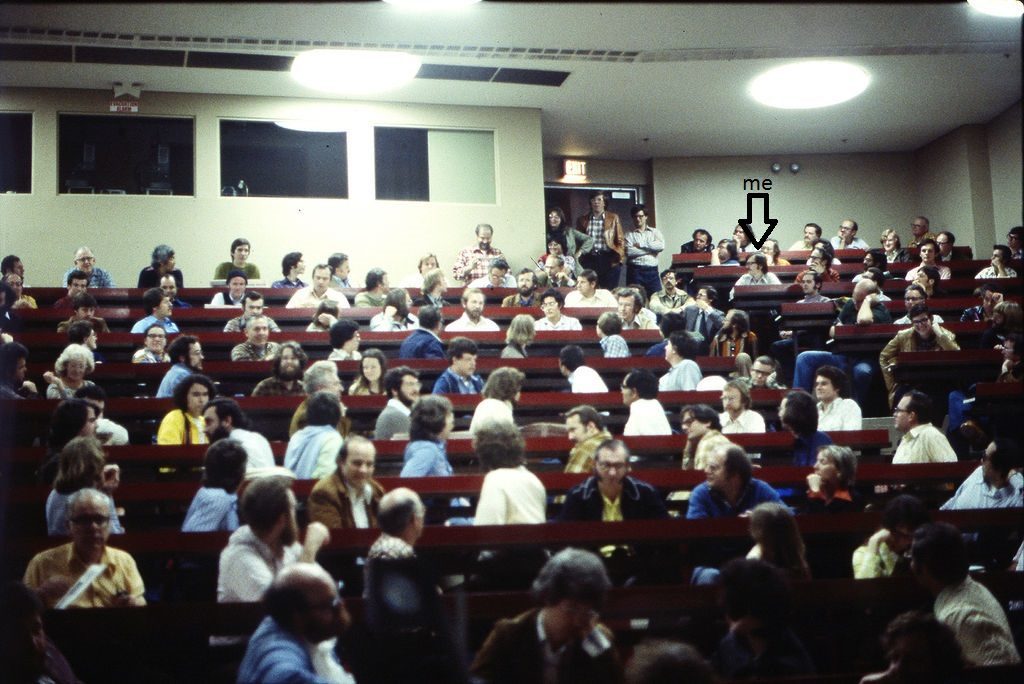
Len was one of the 32 people who gathered in Gordon French’s garage in 1975 for the first meeting of what would become the infamous Homebrew Computer Club where early PC hobbyists displayed their latest creations, including Steve Jobs and Steve Wozniak and their Apple 1. Attendance grew quickly and after outgrowing several other venues, the Homebrew Club found a home at the Stanford Linear Accelerator Center (SLAC) auditorium. This undated photo was taken at the front of the auditorium, toward the audience.
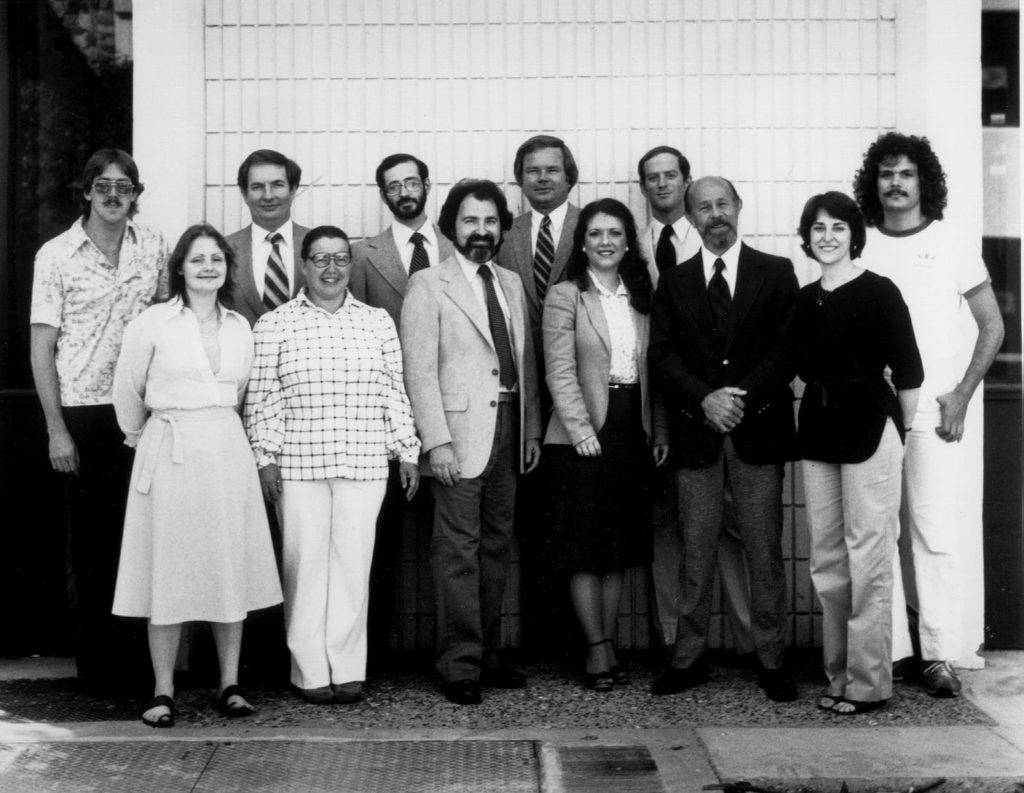
Len, a company builder himself, cofounded Nestar Systems, an early developer of networks for personal computers in 1979. This photo shows employees outside the Palo Alto offices in July 1980. Len is in the back row, third from the left.
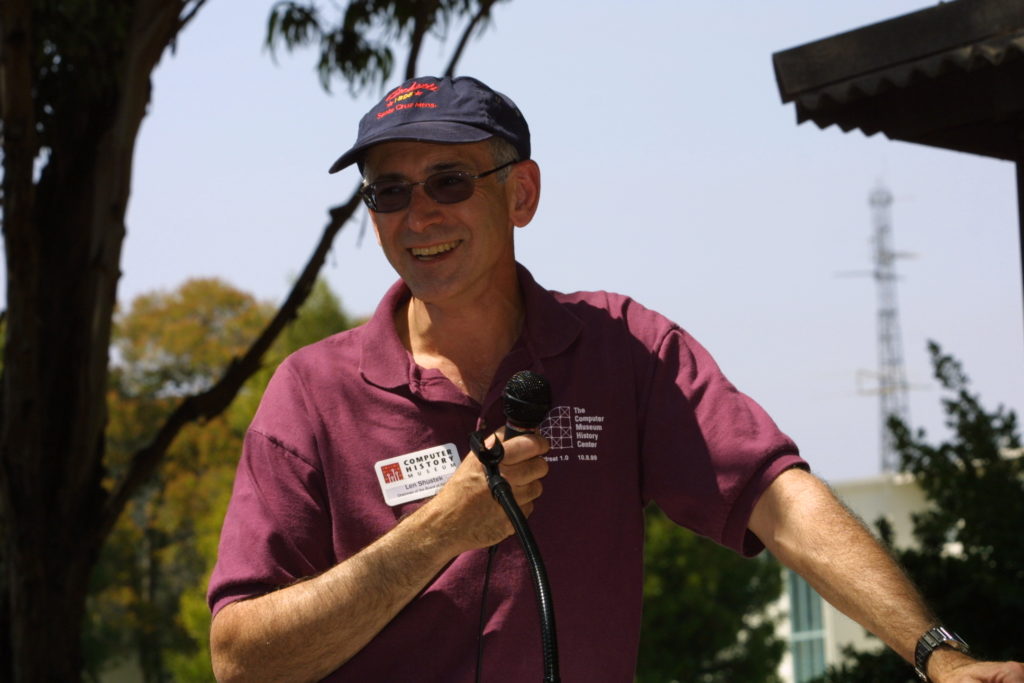
In the early days of the Museum’s operations, Len could often be seen working alongside staff and volunteers. He also enjoyed coming every year to Volunteer Appreciate Day to thank volunteers for their dedication and support. Shown here in 2002.

Len wrote the blog for the Museum’s first, of many, source code releases, MacPaint and Quickdraw Source code on July 18, 2010. It was so popular it crashed the Museum’s servers. Early MacPaint drawing by Susan Kare. Credit: Apple, Inc.
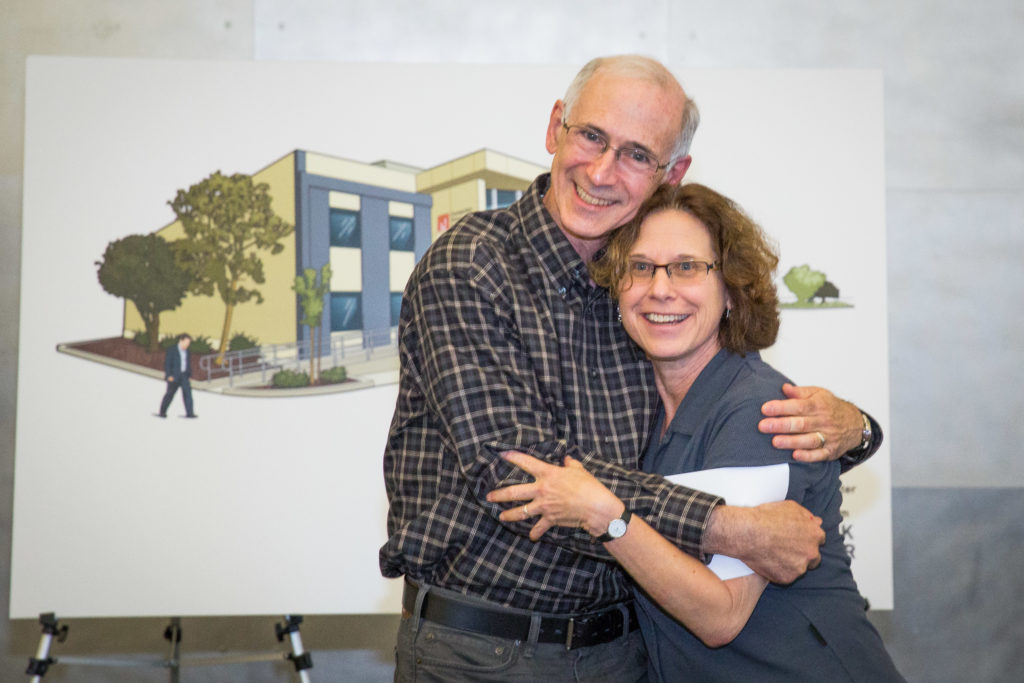
In 2017, the Museum purchased a warehouse to house the growing archival, media, and software collection as well as to expand its archival activities to digitize collections and provide access to researchers. The building was named the Shustek Research Archives in honor of Len. Len is shown here with his wife, Donna Dubinsky, when she surprised him with early plans for the facility.
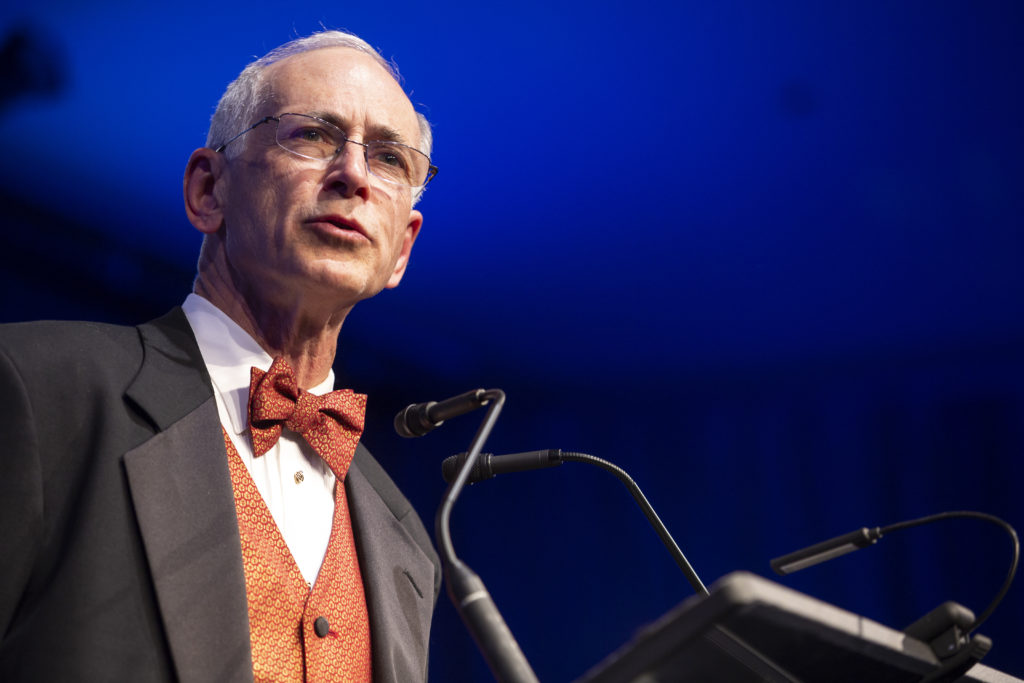
One of Len’s favorite duties as chairman was giving the opening speech at the Museum's annual Fellow Awards which honors distinguished technology pioneers. Len is shown here on stage at the 2018 Fellow Awards. Many of us will remember his inspirational words for years to come.
Len made an impression on everyone he met at CHM, with his passion for the Museum and its activities extending well beyond the board room. He could often be found at planning committee meetings for CHM's Fellow Awards, in the interviewer seat for an oral history, or serving as a subject matter and industry expert for an exhibit. Past and present staff, volunteers, and trustees share their appreciation and memories of Len.
Share you own memories in the comment section below.
![]()
As a major donor, former board member, and Len’s wife, I have a unique viewpoint to comment on Len’s contribution to CHM. Watching Len contribute to the museum has been a lesson in leadership excellence. Len has cared deeply about both the vision of the museum as well as the tiniest detail. He has worked insane hours to further the cause. He has thoughtfully approached building a great board and has been available as needed to staff. He has championed the work of the museum throughout the world. Dare I say that he’s also the museum’s best docent? Len, CHM is an incredible legacy.
Donna
![]()
In 1984, sometime after the launch of the Macintosh, I attended the opening of The Computer Museum in Boston. It was about twenty years ago, when Len hosted me at the Moffett Field Quonset huts. While it was quite a collection, in the moment I recall asking—“who cares”? Well, here we are twenty years later, and the answer is clear: everyone! And given CHM’s new mission, it’s our opportunity to make that clear to the world.
With gratitude for persevering and ensuring that there will be a definitive collection of the primary computing artifacts for posterity,
Dan’l
![]()
Thank you Len for being such a great leader and mentor to me and for CHM. I’ve learned so many things from working with you and watching you work. Most importantly, you taught me over and over again through your actions and words, to focus on the message, and not the messenger or the delivery even. Every person has something to contribute, if you take the time to listen to them and understand their point of view.
Kirsten
![]()
And you came along
And the rest is the history of the Computer History Museum.
You asked: “How do you start a computer museum?”
Len, “I have a proposal for you.”
What followed was our 1994 call when the coup was planned to simply move Boston’s The Computer Museum’s stored artifacts to the e valley for storage and an exhibit.
It was one of the happiest days of my life—finding you, who had the knowledge, energy, and determination to be responsible for the museum.
Thank you, Len
Gordon Bell
![]()
Thank you Len for your leadership and service to the Computer History Museum. This Museum is an opportunity for people across the globe to explore and experience technological advancements over 2000 years of computing history, relate it with our present, and create new possibilities for the future. Thank you for providing this opportunity to all and creating a CHM Family that we call our “second home.”
Best wishes always,
Deblina
![]()
Len,
Thank you for setting the benchmark for leadership which has made the CHM an awesome place with which to be affiliated. The “Personal Characteristics” from our latest CEO search were even modeled after you:
1) He/she is an unusually able person. Definition: They can undertake a
task they have never done before and the results turn out to be in the
top 25% of possible outcomes
2) High energy and passion for whatever he/she is undertaking
3) Charismatic personality and good communicator—able to engage one
on one with sophisticated donors as well as with an audience at events
4) Capable of strategic thinking
5) Team builder but also decision maker
6) Naturally curious/inquisitive person
7) Capable of asking for money
8) Strong moral compass
9) Interest in history
—Rich Redelfs
![]()
It’s been an amazing experience to learn from you, Len. Thank you for your vision for CHM and all that you have done to make that vision a reality. The museum moves forward on the solid foundation that you have built.
All the best,
Jenny
![]()
Len it has been one of my most enduring & profound professional experiences to have worked with and known you. I fully appreciate your dedication, commitment, and wisdom. You were able to envision a Museum that has matured and become as relevant today as any in the country.
Paula
![]()
I am proud to play a role in this extraordinary institution you have built over the past 25 years. Thank you for all you have done and continue to do to assure an ongoing exploration and appreciation of the impact of the computer and its applications on our civilization.
Michelle Mertz
![]()
Len, a note of thanks and appreciation to you for your many years of exemplary service to the Computer History Museum Board of Trustees and for your lifetime of dedication to technological advancement.
Best wishes,
Natasha
![]()
With unending motivation you empowered us to join you in building a Museum. Your story is nothing short of inspirational and is by far my favorite one to tell. Thank you for your vision, wisdom, and guidance over the years, it’s been an honor to have worked with you.
Carina